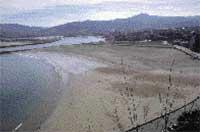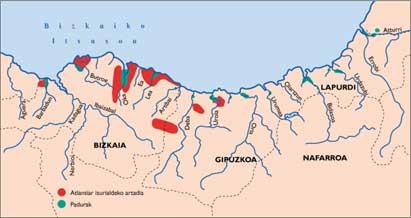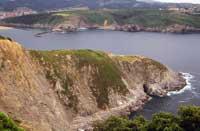Basque Coast (VII): Beaches of Bizkaia
1995/09/01 Estonba Mintxero, Mikel Iturria: Elhuyar aldizkaria
In the last two articles we were able to know the characteristics and current status of the beaches of Lapurdi and Gipuzkoa. In this number have arrived the beaches vizcainos. As for the Basque coast, Bizkaia is the one that has more kilometers of coast. Thanks to the richness of its geomorphological elements along all these kilometers, and to its minor human influence on the coast of Vizcaíno, compared to the coasts of Lapurdi and Gipuzkoa, it offers the possibility of contemplating numerous places of great beauty.
As for the beaches, given the variety of geological characteristics of the coast, there is a great variety. But let us know more thoroughly, analyzing one by one.
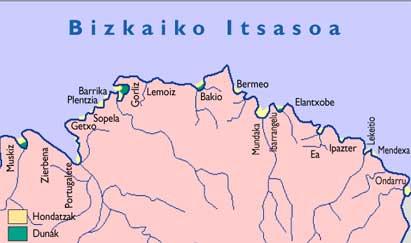
Ondarroa
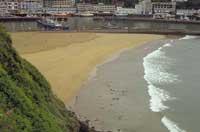
From Mutriku, Ondarroa is the first municipality in Bizkaia. This fishing municipality, located in the Ria del Artibai, has grown a lot thanks to fishing. Due to the expansion, the pier and the streets of Ondarroa have covered almost the marsh of this narrow estuary. The sand dunes and dunes that have been maintained have been reduced to the beach of Arrigorri, to the right of the mouth. This beach, at least to a great extent artificial, is due to the construction of the spigon docks modified the sedimentation currents and the result is the current beach of Arrigorri.
On the other hand, due to the small size and structure of this beach, it has no capacity to develop dunes, so its ecological value is relatively low.
Mendexa Mendexa
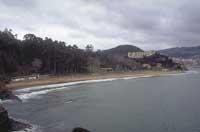
For many the beach of Karraspio is of Lekeitio, but it is not so. This small and wonderful sandy beach, although located in the bay of Lekeitio, is Mendexa. As for ecological values, it must be said that the small extension of the beach makes that the development of the dunes has never been too big and, in addition, recently, with the works done at the back of the beach, these small remains have been destroyed forever.
Lekeitio
On the other side of the mouth of the river Lea is Lekeitio. To a large extent, this village is built on the beach and dunes of the bay that characterizes the island of San Nicolás, an old great sand that today only remains the beach of Isuntza, located under the mount Lumentxa, and that for its characteristics has not been developed by the dunes.
It should be noted that in the low tides the tombolo that joins the island of San Nicolás with the coast is uncovered. With the passing of the years, even in high tide, you can see the tombolo, becoming the clearest witness of geological phenomena in Euskal Herria.
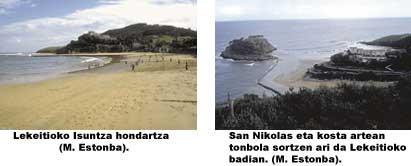
To examine
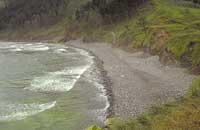
In the bay of Ogella, located between Mount Otoio and Cape Ea, we find the stone beach of the same name. This unique environment reached great fame in the 1970s when it announced the construction of one of the three nuclear power stations that Iberduero wanted to build in the Basque Country. Today the north beach is hidden, although its sand is not comfortable.
A To
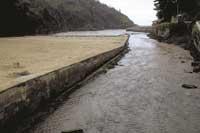
About ten kilometers west of Lekeitio empties the Ea River, surrounded by the streets of the village of the same name. The narrowness of the estuary and the low flow of water of the river has prevented the development of large marshes, which could be seen before, have disappeared completely under the streets and buildings of the town.
The beach is also very narrow. But it occupies the entire mouth in low tide and the small pier of Ea. There are no remains of dunes, but it can be thought that they have been small dunes in the urban section that has reached the highest beach.
Urdaibai Urdaibai
We have already entered the Urdaibai Biosphere Reserve and the first beaches we have found are those of Ibarrangelu. The first is located at the mouth of the river Laga, which leads to the shelter of the imposing cape of Ogoño. The beach of Laga, besides being in a privileged place, has preserved well the natural structure and has dunes of great biodiversity.
However, especially in summer, the enormous tourist pressure that support this beach and the beach of Urdaibai in general, jeopardizes the conservation of this coastal relic.
As if it were not enough, those responsible for the administration, instead of taking measures to protect our ecological heritage, have authorized the lifting of constructions in the dune and its back, as well as the installation of different services (showers, paper bins, tables, roasters, etc. ), showing again its lack of sensitivity towards nature.
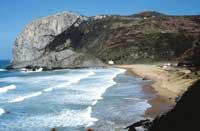
It would be important to design and execute plans to protect and recover as much as possible the last remaining dune remains in Euskal Herria. In my opinion, these plans should have two main axes. On the one hand, measures should be taken to minimize human involvement in these spaces, and, on the other hand, information and awareness campaigns should be promoted among beach users. Only in this way will these important coastal ecosystems be maintained for the new generations.
Later we arrive at the estuary of Urdaibai, where we find the second beach of Ibarrangelu, the beach of Laida.
This beach, along with all the sandstones of the mouth of Urdaibai, is a unique landscape in the whole of Euskal Herria. Thus, due to the channelings that have endured the rest of the Basque Country, the sedimentation of the materials that the sea has brought has caused the existing bars to be consolidated forever, losing their own dynamics. This has not happened in Urdaibai, so these sandals of Mundaka and Ibarrangelu are constantly changing shape, size and depth and has become one of the few places to know and analyze the geological dynamics of the estuaries.
As for the dunes, the structure of the estuary and occasional dredgings have stopped developing on the beach of Laida. If at some point a suitable solution is given to the location of the shipyards, solving the problem of the dredgings and controlling the human pressure, it is possible to develop dunes in the sandals of Urdaibai.
Bermeo
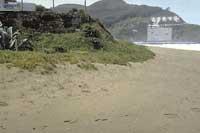
Hidden in the cliffs of Cape Matxitxako, is the wonderful beach of Aritxatxu, in Bermeo. This small beach, known almost exclusively by the bermeotarras, is located in a beautiful place and its difficulties of access make it scarcely suffer human pressures.
However, due to its size and location, it does not develop dunes, so from an ecological point of view it does not have too much value.
Bakio Bakio
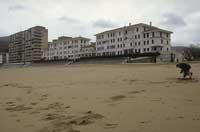
The beach of Bakio has its origin in Zarautz. In the past, a wide bay could be opened in the territories that can currently be seen at the back of the beach. The transport and sedimentation of marine materials would have closed this bay with a deposit of sand. As a result, after this sandal, a reservoir would emerge that would explain the structure of marshes, to the extent that in the highest part of the beach there was a dune and a vegetation typical of these areas.
The subsequent changes have come from the hand of man. The first ones took place in the marsh, with the initial objective of obtaining agricultural lands and later for the expansion of the village, proceeded to the drying of the marshes and to the total channeling of the streams Estepona and Ondarre that end in the bay of Bakio.
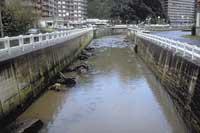
The latter, however, have especially influenced the dunes. The tourist development and the choice of the second house for many Bilbaínos, has filled with buildings the wide extensions of beaches and dunes. The large and structured dunes that could be seen a few years ago have been reduced to small remains that have been kept to the right of the beach.
From now on, cases like Bakio should be taken into account if we do not want tourism to be synonymous with destroying the natural, ecological and landscape value of the area. In short, this goes against the development that we want to promote.
Astondo Bay (Gorliz-Plentzia)
At the mouth of the Butrón River is one of the most spectacular areas of the Basque coast: Bay of Astondo.
In it, the typical semi-circular beach of the bays and the imposing beach, full of psammófila vegetation, could be seen throughout the months of October.
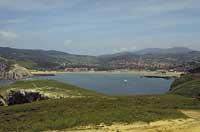
At present the situation is different. The expansion of the village of Plentzia, the construction of the hospital of Gorliz and its road, as well as the works of tourist promotion, besides the division of the beach in two zones, have had a great influence on the dunes. However, although the road and car parks have been isolated and consolidated after the planting of pinaster pine, the dunes maintained in the area of Gorliz are the most extensive in the Basque Country. In addition, it is worth mentioning the fossilization of the dunes of Astondo, one of the most important points from the geological point of view of the Basque Country.
For all these reasons, the dunes of the area of Gorliz have been commended in numerous works and investigations, which has not meant, for the moment, the protection of this wonderful aspect. On the contrary, in recent years, attacks have intensified when parking, recreation areas and other services built for tourists who come close in summer and mainly from Bilbao, increasingly preventing their dynamics and significantly reducing their width.
Barrika Barrika
To the left of the bay of Astondo is the small town of Barrika. At the entrances of its wonderful cliffs there are three small beaches open to the sea: Muriola, Barrika and Meñakoz. Share the last with Sopelana.
The three beaches mentioned are very small and have little sand, so we will hardly find dunes and its typical vegetation. However, the beaches and cliffs surrounding them constitute a set of great landscape value.
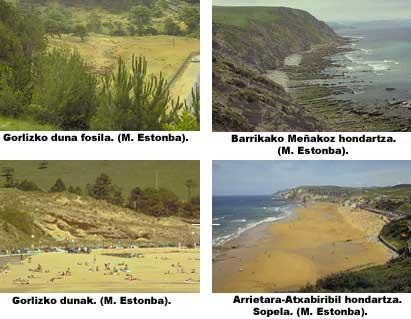
Sopelana Sopelana
The coast of Sopelana is a succession of that of Barrika and the same can be said of that of Getxo, at least until the end of the Galea.
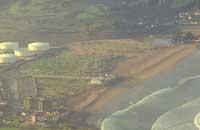
In this cliff Basque coast, due to the erosion of the sea, numerous inlets have been opened and in each of them is a small and wonderful beach.
As for Sopelana, it has three beaches: the already mentioned beach of Meñakoz in Barrika, the best known of Sopelana, that of Arrietara-Atxabiribil, and finally that of Barinatxe, also known as “wild” for its location.
The second of them is the one that has suffered the most human being, since in addition to the bars, roads and parking that have been built on the beach itself, in the upper cliffs have been built urbanizations that give a beating to the area.
We cannot forget that during the summer and along with the beaches of Getxo, these beaches receive the visit of thousands of people from Gran Bilbao, with the influence of this human pressure on the nature of the environment.
However, on the beach of Arrietara-Atxabiribil you can still see small remains of psammófila vegetation. Their future is really black if no drastic measures are taken as soon as possible.
Getxo
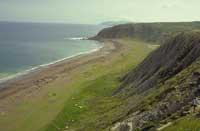
In the territories of Getxo there are numerous beaches. Two of them, that of Las Arenas and that of Ereaga, are the last remnants of the great accumulation of sands that has the Nervión estuary in the back of the Abra. In the past, the municipality of Areeta, in Getxo, as its name indicates, was a large sandy beach that reached the cliffs of Algorta, where you could see the dunes and vegetation typical of the dunes, one of the largest delegations of the Basque Country. However, the complete channeling of the mouth, the spike and installation built for the improvement of the port and the immense urbanization of the environment, in addition to the disappearance of the famous bar of Portugalete, have left under the asphalt and cement a magnificent arenal. The beaches of Las Arenas and Ereaga are the only silent witnesses of this prosperous past.
The rest of the beaches of Getxo, like the beaches of Arrigunaga, Gorrondatxe (Azkorri) and Barinatxe, which it shares with Sopelana, Barrika and Sopelana, are located under the cliffs of the coast of Uribe.
In one of them, specifically in Gorrondatxe (Azkorrin), despite being a small beach, important witnesses of the dune vegetation have been preserved.
Muskiz - Zierbena
At the mouth of the river Barbadun and very close to the muga with Cantabria, is the last beach of the Basque Country, La Arena. Although the construction of the refinery of the company Petronor has had a great influence on the marsh and beach of this ria, the beach of La Arena has maintained wide widths of dunes. In addition, the fabrics of the yellow dunes still move for being the ideal place to study the dynamics of the dunes in Euskal Herria.
Proof of this great value is its inclusion in the Catalogue of Natural Areas of Importance of the Autonomous Community of the Basque Country or its designation as part of strict conservation of the Law of Land Management (DOT) project.
However, like the rest of the beaches and especially during the summer, it suffers a huge human pressure that affects in an important way the dune and its vegetation, since the excessive trampling and dune constructions and the proliferation of services imposes to this fragile ecosystem situations of disturbing stress. The protection of the dunes in La Arena and in general throughout the Basque Country needs an immediate response, since if not, future generations will risk not knowing these ecological and geological gems.
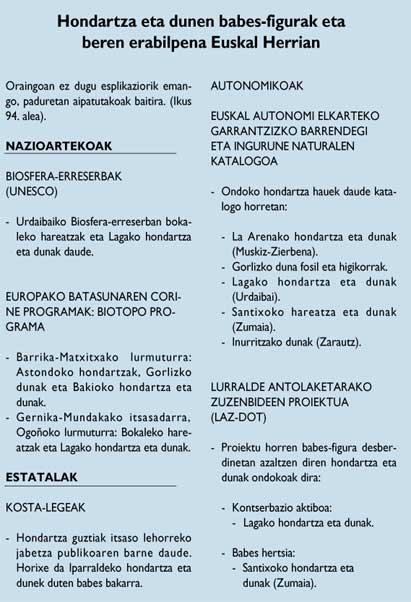

Gai honi buruzko eduki gehiago
Elhuyarrek garatutako teknologia



